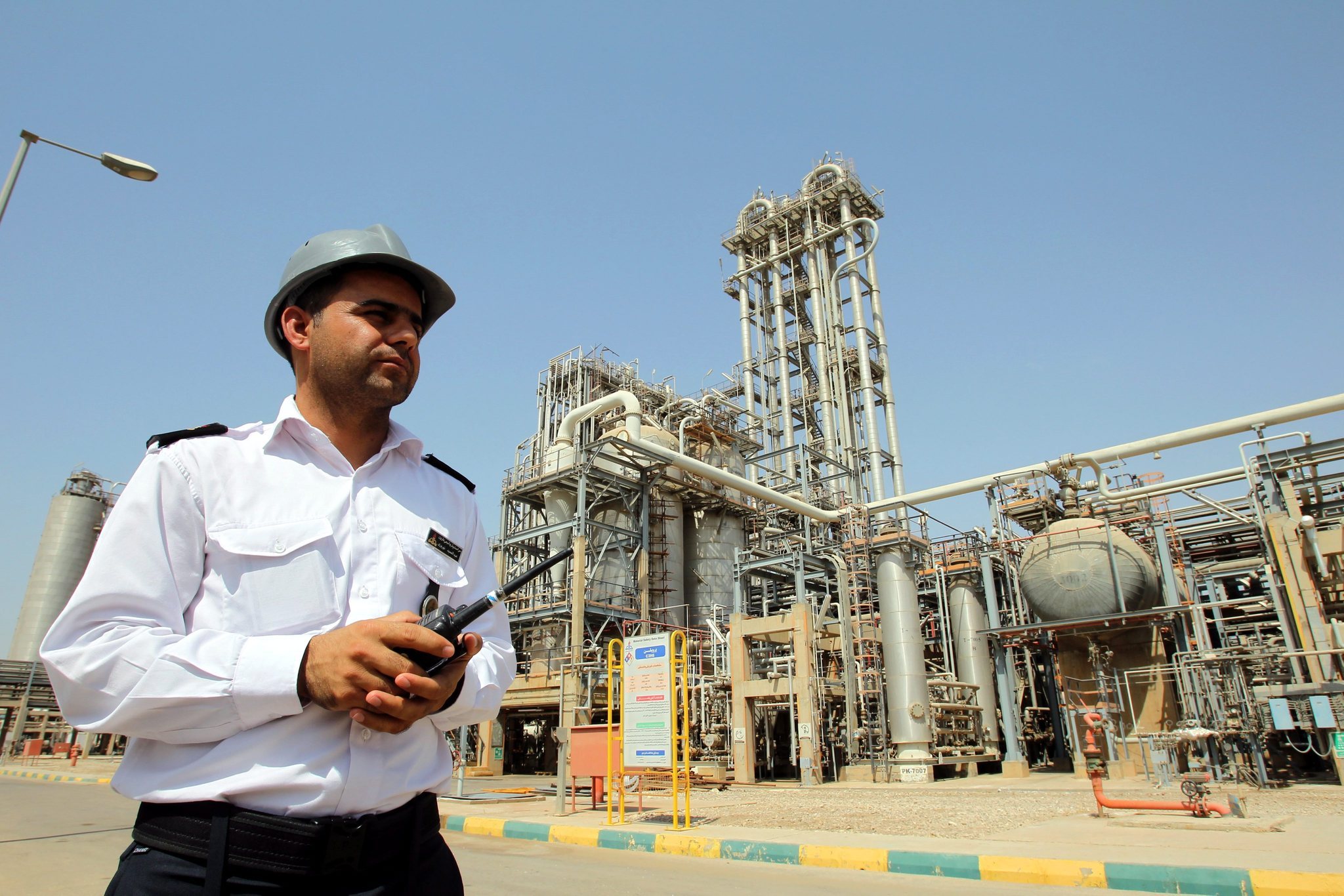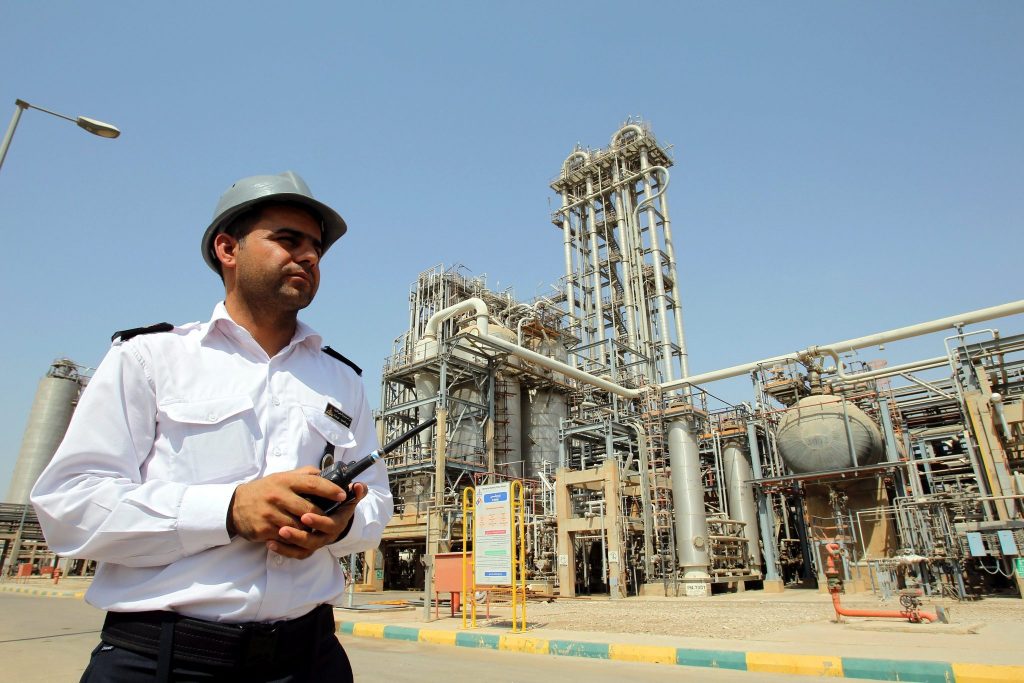 Low oil prices have had an impact as great as nuclear-related sanctions on Iran, which ended its 2015 fiscal year on March 20 with a disappointing estimated growth rate of 1 percent. Nevertheless, Iran is in a better position to weather this situation than many other oil-producing countries.
Low oil prices have had an impact as great as nuclear-related sanctions on Iran, which ended its 2015 fiscal year on March 20 with a disappointing estimated growth rate of 1 percent. Nevertheless, Iran is in a better position to weather this situation than many other oil-producing countries.
Due in part to the sanctions, Iran’s economy is more diversified than many other oil producers. This could put it in a better position to achieve long-term growth, provided that the government institutes economic reforms in the short term.
Iran’s oil revenues were nearly cut in half after sanctions were tightened in 2012. Overall GDP contracted by 6.6 percent in 2012 and by nearly 2 percent in 2013. The economy rebounded the following year and GDP grew by 4.3 percent due to high oil prices and better management of the economy under President Hassan Rouhani.
Since mid-2014, however, the price of oil has dropped by nearly 75 percent. The Rouhani government submitted a revised budget to parliament in January based on an oil price of $40 per barrel instead of $72. But the February basket price was even lower—a mere $28.72.
Despite the downturn, Iran is better poised to weather low oil prices than many other oil-producing countries. Before sanctions were ramped up on Iran, oil and gas constituted 53 percent of all government revenues. However, in the latest budget, that has been reduced to 23.9 percent.
Services and agriculture account for a large portion of Iran’s economy, and the country exports electronics, construction materials, minerals, and automobiles. Iran is the largest car producer in the Middle East and was the eleventh-largest in the world before the nuclear sanctions. The tourism and hospitality industries, according to Iranian investors who recently briefed the Atlantic Council, hold the biggest potential for growth following sanctions relief. Despite continuing complications involving the banking sector, Iran appears to be drawing interest from European companies in these areas.
Setting the Stage for Growth
Western business leaders and other potential investors recognize that following years of sanctions, it is necessary to take a long-term view of the Iranian economy. Hamid Biglari, an emerging markets and investment banking advisor, noted at a recent event organized by the RAND Corporation that the “horizon for economic growth is ten to fifteen years from sanctions relief.”
At this stage, investors are looking more at political and policy indicators than economic indicators and want signals that the Iranian leadership shares a long-term outlook. New policies and foundational elements must now take shape to set the stage for a ten to fifteen-year growth horizon.
Foreign investment is crucial, especially in Iran’s aging oil and gas sector. Rouhani has declared attracting foreign investment to be one of his government’s top priorities, linking it to “stable and swift” economic growth. He has said that his aim is to secure $50 billion worth of foreign investment over the next year.
To attract such investment, Iran needs to continue diversifying, but also signal its ability to protect foreign capital and foster inclusive growth.
Due to the impact of sanctions, Iran is still considered an “emerging market” despite favorable investment conditions, including educated labor, fairly advanced technology, and modern infrastructure. While interest in Iran is high among foreign investors, so is uncertainty. Dueling power structures, state dominance of many industries, corruption, a lack of transparency, and continued US non-nuclear sanctions give investors pause.
In this environment, small moves will send big signals. Acknowledging and attempting to curb significant informal market activity, for example, would show that the government is serious about addressing corruption and returning to normal global economic channels.
However, the most significant key to unlocking Iran’s economic potential is ensuring inclusive growth that harnesses the country’s valuable human capital.
Unemployment in Iran rose under sanctions, with youth and women disproportionately facing difficulty attaining any or adequate employment. Currently, a youth tech and entrepreneurship spring is underway in neighboring Pakistan and India. This same innovative job creation can and should take place in Iran. Age demographic trends match across the region—about two-thirds of the population in Iran, Pakistan, and India are under thirty. Iran’s high literacy and advanced-degree rates, and mobile phone penetration are notable advantages in Iran that create the potential for an entrepreneurial boom. Iran’s universities are expected to produce one to 1.5 million graduates in the coming years, with many of these students, particularly women, specializing in engineering, science, and math. Cultivating the entrepreneurial tech sectors will help ensure highly-educated young people stay in Iran, and tackle the 25 percent youth unemployment rates.
The Rouhani government announced a roadmap to becoming the region’s premier knowledge-based economy. Inclusivity is key to achieving that goal, and particularly in emerging economies, a precursor to economic prosperity.
Iran’s 2015 growth rate was disappointing. But Iran is in a potential sweet spot where economic reforms and long-term planning can lead to substantial improvement. Proper leadership and short-term reforms are key to Iran’s re-emergence in the global market in the coming decade.
Nazia Khan is assistant director of the Atlantic Council’s South Asia Center.
